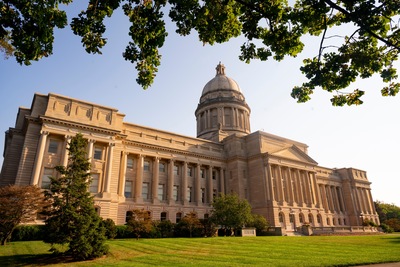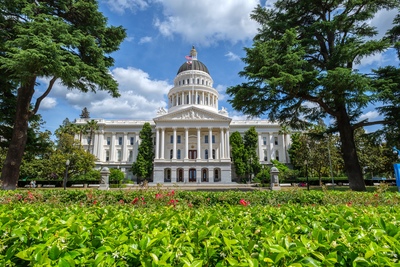
Technology & Privacy
Here's What You Need To Know About Data Center Policy Trends
November 4, 2025 | Morgan Scarboro
 (1)-8d7f8e-1200px.jpeg)
Key Takeaways:
Data centers have gone from boring warehouses full of computers to a policy hotspot in the last few years. The building of data centers manages to connect many of today’s trending policy areas. Let’s take a quick walk through the policy implications.
While the rise of data centers was initially fueled by the transition to cloud-based computing, today much of the intense investment in data center expansion is driven by blockchain (crypto) and artificial intelligence — technology trends that are ravenously hungry for compute (i.e., computing resources).
Many states began offering tax incentives to build data centers in order to attract new investment from tech companies and to bring jobs to the state. A total of 32 states enacted some sort of incentive or tax break to encourage data center construction. Fast forward to today, and local residents are beginning to push back against data centers in their neighborhoods, complaining that the data centers are noisy, ugly, and don’t create that many jobs.
For those of us living in the DC area, we know that northern Virginia is the worldwide leader in data centers. Responding to local complaints, the County Board of Supervisors in Fairfax, Virginia, recently voted to enact a new zoning ordinance on data centers that will ensure data centers are at least 200 feet away from residential areas and require noise studies.
In addition to standard NIMBY arguments, data centers are also being criticized for their water use. Data centers consume a large amount of water to cool data servers with medium-sized data centers consuming up to 300,000 gallons of water a day. This can be particularly controversial in western states that are already dealing with droughts.
Finally, the hottest issue when it comes to data centers is energy. These facilities use a lot of power. Like, enough that utilities are predicting the largest increase in power consumption in decades on account of the expected rise in data center construction. Forecasters expect data centers’s share of annual U.S. electricity generation to increase from 4% in 2023 to 9% by 2030. The energy aspect of data centers offers a handful of related questions: Where will this extra energy come from (new generation)? How will the new energy get to the data centers (transmission)? And will this help spur or redirect the build-out of renewable energy in the US? And can the current grid and utilities move fast enough?
The importance of data centers could drive new investments in renewable energy. In fact, companies with major data center needs could skip the grid altogether and cultivate their own power generation nearby. That’s what Google is attempting with advanced geothermal generation in Nevada and Microsoft recently announced a plan to restart a retired nuclear power plant for power data centers in Pennsylvania.
Data centers tie together the newest technology trends, classic economic incentives, local zoning debates, water usage, plus power generation, renewable energy, and transmission lines. They’re a policy hotspot worth watching.

November 4, 2025 | Morgan Scarboro

October 9, 2025 | Bill Kramer

October 8, 2025 | Bill Kramer